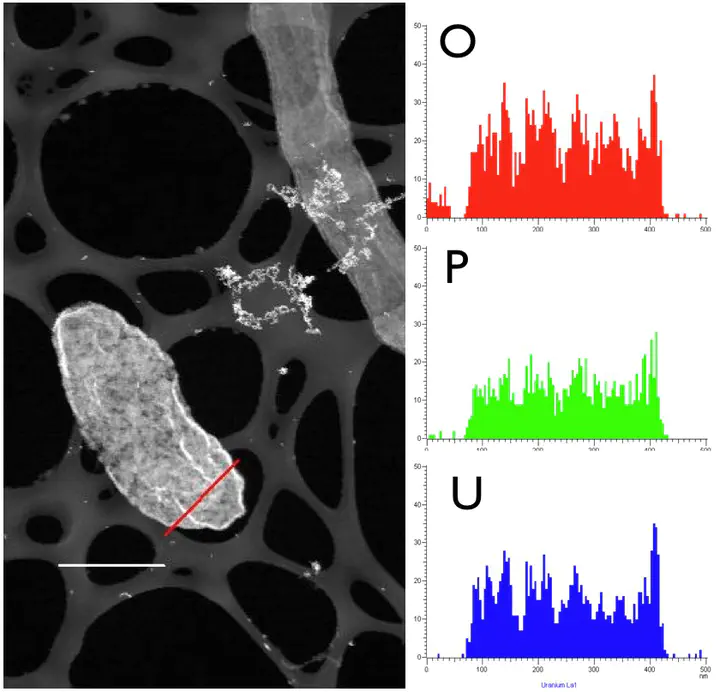U(VI) Reduction by a Diversity of Outer Surface c-Type Cytochromes of Geobacter sulfurreducens
 Image credit: [Lovley Lab]
Image credit: [Lovley Lab]Abstract
Early studies with Geobacter sulfurreducens suggested that outer-surface c-type cytochromes might play a role in U(VI) reduction, but it has recently been suggested that there is substantial U(VI) reduction at the surface of the electrically conductive pili known as microbial nanowires. This phenomenon was further investigated. A strain of G. sulfurreducens, known as Aro-5, which produces pili with substantially reduced conductivity reduced U(VI) nearly as well as the wild type, as did a strain in which the gene for PilA, the structural pilin protein, was deleted. In order to reduce rates of U(VI) reduction to levels less than 20% of the wild-type rates, it was necessary to delete the genes for the five most abundant outer surface c-type cytochromes of G. sulfurreducens. X-ray absorption near-edge structure spectroscopy demonstrated that whereas 83% ± 10% of the uranium associated with wild-type cells correspond to U(IV) after 4 h of incubation, with the quintuple mutant, 89% ± 10% of uranium was U(VI). Transmission electron microscopy and X-ray energy dispersion spectroscopy revealed that wild-type cells did not precipitate uranium along pili as previously reported, but U(IV) was precipitated at the outer cell surface. These findings are consistent with those of previous studies, which have suggested that G. sulfurreducens requires outer-surface c-type cytochromes but not pili for the reduction of soluble extracellular electron acceptors.
Supplementary notes can be added here, including code and math.